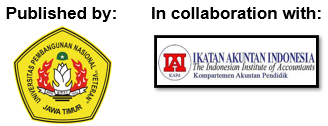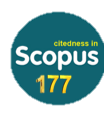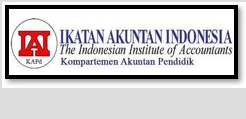Narrative Online Advertising as External Variable in the Development of the Technology Acceptance Model of Go-Pay for Millennials
DOI:
https://doi.org/10.33005/jasf.v3i1.95Keywords:
Narrative Online Advertising, Technology Acceptance Model (TAM), e-wallet, GoPayAbstract
Human life is inseparable from technological developments. Until now, research related to the Technology Acceptance Model (TAM) is still used as a basis for the theory of technology product acceptance in line with the increasingly complex development of human behavior and needs. This research is the development of Technology Acceptance Modeling (TAM) by involving the Narrative Online Advertising variable. The purpose of this study is to develop and test the model by including the Narrative Online Advertising variable as an external variable or antecedent variable to the attitudes and intentions of millennials in adopting an electronic wallet (Go-Pay). The Narrative Online Advertising variable, as the theory developed by Ching, Tong, Chen, & Chen, is an online advertising strategy involving the narrative element in advertising content, which has been widely displayed on the internet media. The object used in this study is Go-pay, a popular electronic wallet application in Indonesia. The sample in this study is the millennial communities domiciled in Surabaya totaling 200 respondents, collecting data through questionnaires, using a Likert scale, and the analytical tool used is SmartPLS. The results of this study show that Narrative Online Advertising has a positive effect on the Perception of Ease of Use, but does not affect the Perception of Benefits. At the same time, the four factors positively affect the Attitude and intention to adopt Go-pay. These results indicate that millennials will use Go-pay if Narrative Online Advertising is improving their interest in using the e-wallet. Therefore, it is suggested that in making an e-money application, Narrative Online Advertising is important to attract millennials in using the app.
Downloads
References
Adesina, A. A., & Ayo, C. K. (2010). An empirical investigation of the level of users' acceptance of e-banking in Nigeria. Journal of Internet Banking and Commerce, 15(1), 1–13. https://doi.org/10.1007/978-3-531-92534-9_12
Agag, G., & El-Masry, A. A. (2016). Understanding consumer intention to participate in an online travel community and effects on consumer intention to purchase travel online and WOM: An integration of innovation diffusion theory and TAM with trust. Computers in Human Behavior, 60, 97–111. https://doi.org/10.1016/j.chb.2016.02.038
Ajibade, P. (2019). Technology acceptance model limitations and criticisms: Exploring the practical applications and use in technology-related studies, mixed-method, and qualitative researches. Library Philosophy and Practice, 2019.
Bakker, I., van der Voordt, T., Vink, P., & de Boon, J. (2014). Pleasure, Arousal, Dominance: Mehrabian and Russell revisited. Current Psychology, 33(3), 405–421. https://doi.org/10.1007/s12144-014-9219-4
Bandura, A. (1977). Self-efficacy: Toward a Unifying Theory of Behavioral Change. Psychological Review, 84(2), 191–215. https://doi.org/10.1007/978-3-319-75361-4
Bandura, A. (2001). SOCIAL COGNITIVE THEORY: An Agentic Perspective. Annual Review of Psychology, 52, 1–26.
Ben Mansour, K. (2016). An analysis of business' acceptance of internet banking: An integration of e-trust to the TAM. Journal of Business & Industrial Marketing, 31(8), 982–994. https://doi.org/10.1108/JBIM-10-2016-271
Boller, G. W., & Olson, J. C. (1991). Experiencing Ad Meanings: Crucial Aspects of Narrative/Drama Processing. Advances in Consumer Research, 18. http://acrwebsite.org/volumes/7156/volumes/v18/NA-18
Brajnik, G., & Gabrielli, S. (2010). A review of online advertising effects on the user experience. International Journal of Human-Computer Interaction, 26(10), 971–997. https://doi.org/10.1080/10447318.2010.502100
Bruner, G. C., & Kumar, A. (2005). Explaining consumer acceptance of handheld Internet devices. Journal of Business Research, 58(5), 553–558. https://doi.org/10.1016/j.jbusres.2003.08.002
Burnkrant, R. E., & Unnava, H. R. (1995). Effects of Self-Referencing on Persuasion. Journal of Consumer Research, 22(1), 17–26.
Chen, J. V., Yen, D. C., & Chen, K. (2009). The acceptance and diffusion of innovative smartphone use: A case study of a delivery service company in logistics. Information and Management, 46(4), 241–248. https://doi.org/10.1016/j.im.2009.03.001
Childers, T. L., Carr, C. L., & Carson, S. (2001). Hedonic and utilitarian motivations for online retail shopping behavior. Journal of Retailing, 77, 511–535. https://doi.org/10.1016/S0022-4359(01)00056-2
Ching, R. K. H., Tong, P., Chen, J., & Chen, H. (2013). Narrative online advertising: identification and its effects on Attitude toward a product. Internet Research, 23(4), 414–438. https://doi.org/10.1108/IntR-04-2012-0077
Choi, S. M., & Sohn, D. (2008). Building Customer Relationships in an Electronic Age: The Role of Interactivity of E-Commerce Web Sites. Psychology & Marketing, 25(7), 602–618. https://doi.org/10.1002/mar
Dabholkar, P. A., & Bagozzi, R. P. (2002). An Attitudinal Model of Technology-Based Self - Service: Moderating Effects of Consumer Traits and Situational Factors. Journal of the Academy of Marketing Science, 30(3), 184–201. https://doi.org/10.1177/0092070302303001
Davis, F. D., Bagozzi, R., & Warshaw, P. (1989). User Acceptance Of Computer Technology: A Comparison Of Two Theoretical Models. Management Science, 35(8), 982–1003., 35(8), 982–1003. https://doi.org/10.2307/2632151
Davis, F., Bagozzi, R., & Warshaw, P. (1989). User Acceptance of Computer Technology: A Comparison of Two Theoretical Models. Management Science, 35(8), 982–1002. https://doi.org/10.1287/mnsc.35.8.982
Davis, F. D. (1986). A technology acceptance model for empirically testing new end-user information systems: Theory and results. Doctoral Dissertation. Cambridge, MA: MIT Sloan School of Management.
Debevec, K., & Iyer, E. (1988). Self‐referencing as a mediator of the effectiveness of sex‐role portrayals in advertising. Psychology & Marketing, 5(1), 71–84. https://doi.org/10.1002/mar.4220050106
Deighton, J., Romer, D., & McQueen, J. (1989). Using Drama to Persuade. Journal of Consumer Research, 16(3), 335. https://doi.org/10.1086/209219
Donovan, R. J., & Rossiter, J. R. (1982). Store Atmosphere: An Environmental Psychology Approach. Journal of Retailing, 58(1), 34–57.
Eroglu, S. A., Machleit, K. A., & Davis, L. M. (2001). Atmospheric qualities of online retailing: A conceptual model and implications. Journal of Business Research, 54(2), 177–184. https://doi.org/10.1016/S0148-2963(99)00087-9
Escalas, J. E. (2004). Imagine yourself in the product : Mental simulation, narrative transportation, and persuasion. Journal of Advertising, 33(2), 37–48. https://doi.org/10.1080/00913367.2004.10639163
Fishbein, M., & Ajzen, I. (1975a). Belief, Attitude, Intention, and Behavior: An Introduction to Theory and Research. Addison-Wesley Publishing Company.
Fishbein, M., & Ajzen, I. (1975b). Belief, Attitude, Intention, and Behavior: An Introduction to Theory and Research. Addison-Wesley Series in Social Psychology.
Gao, L., & Bai, X. (2014). A unified perspective on the factors influencing consumer acceptance of the internet of things technology. Asia Pacific Journal of Marketing and Logistics, 26(2), 211–231. https://doi.org/10.1108/APJML-06-2013-0061
Garson, G. D. (2016). Partial Least Squares: Regression & Structural Equation Models (G. D. Garson (ed.)). Statistical Publishing Associates 274 Glenn Drive Asheboro, NC 27205 USA.
Gentry, L., & Calantone, R. (2002). A Comparison of Three Models to Explain Shop-Bot Use on the Web. Psychology and Marketing, 19(11), 945–956. https://doi.org/10.1002/mar.10045
Granić, A., & Marangunić, N. (2019). Technology acceptance model in an educational context: A systematic literature review. British Journal of Educational Technology, 50(5), 2572–2593. https://doi.org/10.1111/bjet.12864
Hair, J., Hult, G. T. M., Rigle, C. M., & Sarstedt, M. (2014). A Primer on Partial Least Squares Structural Equation Modeling (PLS-SEM). SAGE Publication Inc.
Jackson, C. M., Chow, S., & Leitch, R. A. (1997). Toward an Understanding of the Behavioral Intention to Use an Information System. Decision Sciences, 28(2), 357–389. https://doi.org/10.1111/j.1540-5915.1997.tb01315.x
Keller, P. A., & Block, L. G. (1997). Vividness effects: a resource-matching perspective. Journal of Consumer Research, 24(3), S65–S80. https://doi.org/10.2307/259249
Keng, C., Ting, H., & Chen, Y. (2011). Effects of virtual‐experience combinations on consumer‐related "sense of virtual community." Internet Research, 21(4), 408–434. https://doi.org/10.1108/10662241111158308
King, W. R., & He, J. (2006). A meta-analysis of the technology acceptance model. Information and Management, 43(6), 740–755. https://doi.org/10.1016/j.im.2006.05.003
Koufaris, M. (2002). Applying the Technology Acceptance Model and flow theory to online consumer behavior. Information Systems Researchnformation Systems Research, 13(2), 205–223.
Koufaris, Marios. (2002). Applying the Technology Acceptance Model and Flow Theory to Online Consumer Behavior. Information Systems, 13(November 2014), 205–223.
Kozinets, R. V, Valck, K. De, Wojnicki, A. C., & Wilner, S. J. S. (2010). Networked Narratives : Understanding Word-of-Mouth. 74(March), 71–89.
Kulviwat, S., Bruner, G. C. I., Kumar, A., & Clark, S. A. N., and T. (2007). Toward a Unified Theory of Consumer Acceptance Technology. Psychology & Marketing, 24(12), 1059–1084. https://doi.org/10.1002/mar
Kurnia, S., & Chien, A. J. (2003). The Acceptance of Online Grocery Shopping. December 219–233.
Liao, Z., & Cheung, M. T. (2002). Internet-based e-banking and consumer attitudes: An empirical study. Information and Management, 39(4), 283–295. https://doi.org/10.1016/S0378-7206(01)00097-0
Lien, N. H., & Chen, Y. L. (2013). Narrative ads: The effect of argument strength and story format. Journal of Business Research, 66(4), 516–522. https://doi.org/10.1016/j.jbusres.2011.12.016
Lin, C. A., & Kim, T. (2016). Predicting user response to sponsored advertising on social media via the technology acceptance model. Computers in Human Behavior, 64, 710–718. https://doi.org/10.1016/j.chb.2016.07.027
Mathieson, K. (1991). Predicting user intentions: Comparing the technology acceptance model with the theory of planned behavior. Information Systems Research, 2(3), 173–191. https://doi.org/10.1287/isre.2.3.173
Mathwick, C., Malhotra, N., & Rigdon, E. (2001). Experiential value: Conceptualization, measurement, and application in the catalog and Internet shopping environment. Journal of Retailing, 77(1), 39–56. https://doi.org/10.1016/S0022-4359(00)00045-2
Mooradian, T. A., Matzler, K., & Szykman, L. (2008). Empathetic responses to advertising: Testing a network of antecedents and consequences. Marketing Letters, 19(2), 79–92. https://doi.org/10.1007/s11002-008-9032-7
Padgett, D., & Allen, D. (1997). Communicating experiences: A narrative approach to creating a service brand image. Journal of Advertising, 26(4), 49–62. https://doi.org/10.1080/00913367.1997.10673535
Park, S. Y. (2009). An Analysis of the Technology Acceptance Model in Understanding University Students' Behavioral Intention to Use e-Learning. Educational Technology & Society, 12(3), 150–162. https://doi.org/10.1007/s00340-009-3513-0
Pavlou, P. A. (2014). Consumer Acceptance of Electronic Commerce : Integrating Trust and Risk with the Technology Acceptance Model Integrating Trust and Risk with the Technology Acceptance Model Commerce : International Journal of Electronic Commerce, 7(3), 101–134.
Phillips, B. J., & McQuarrie, E. F. (2010). Narrative and Persuasion in Fashion Advertising. Journal of Consumer Research, 37(3), 368–392. https://doi.org/10.1086/653087
Setyowati, D (2019). Transaksi Tembus Rp 89,5 Triliun, Pengguna Aktif GoPay Terbanyak di RI, https://katadata.co.id/berita/2019/08/14/transaksi-tembus-rp-895-triliun-pengguna-aktif-gopay-terbanyak-di-ri, Accessed January 18, 2020.
Suryaningrum, D. H. (2012). Assessing Individual Performance on Information Technology Adoption: A New Competing Model. Global Journal of Business Research, 6 (4), 111-125
Stern, B. (1994). A revised communication model for advertising: Multiple dimensions of the source, the message, and the recipient. Journal of Advertising, 23(2), 5–15. https://doi.org/10.1080/00913367.1994.10673438
Taylor, S., & Todd, P. (1995). Understanding information technology usage: A test of competing models. Information Systems Research, 6(2).
Venkatesh, V. (2000). Determinants of Perceived Ease of Use: Integrating Control, Intrinsic Motivation, Acceptance Model. Information Systems Research, 11(4), 342–365.
Venkatesh, Viswanath, & Davis, F. D. (2000). Theoretical Acceptance Extension Model : Field Four Studies of the Technology Longitudinal. Management Science, 46(2), 186–204. https://doi.org/10.1287/mnsc.46.2.186.11926
Wells, W. D. (1989). "Lectures and dramas," in Cafferata, P. and Tybout, A. (Eds), Cognitive and Affective Responses to Advertising. Lexington Books, Lexington, MA.
Downloads
Published
How to Cite
Issue
Section
License
Copyright (c) 2020 Sugeng Purwanto, Sri Hartini, Gancar Candra Premananto

This work is licensed under a Creative Commons Attribution 4.0 International License.














